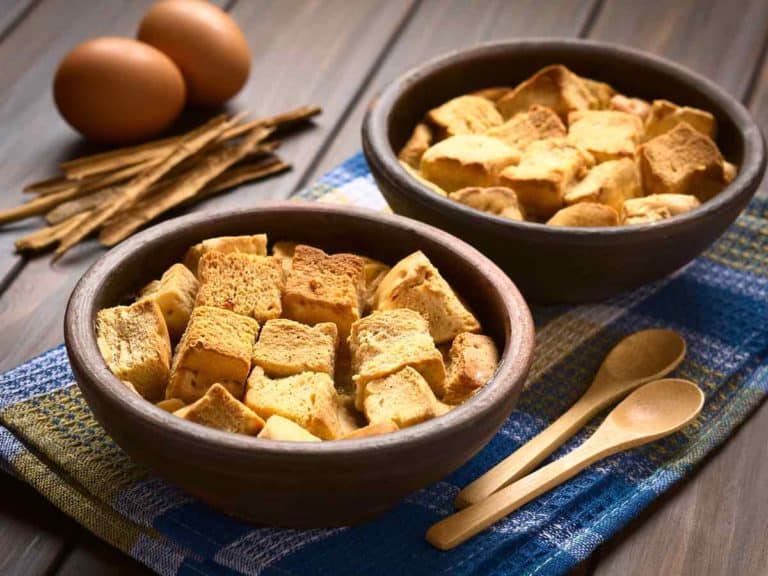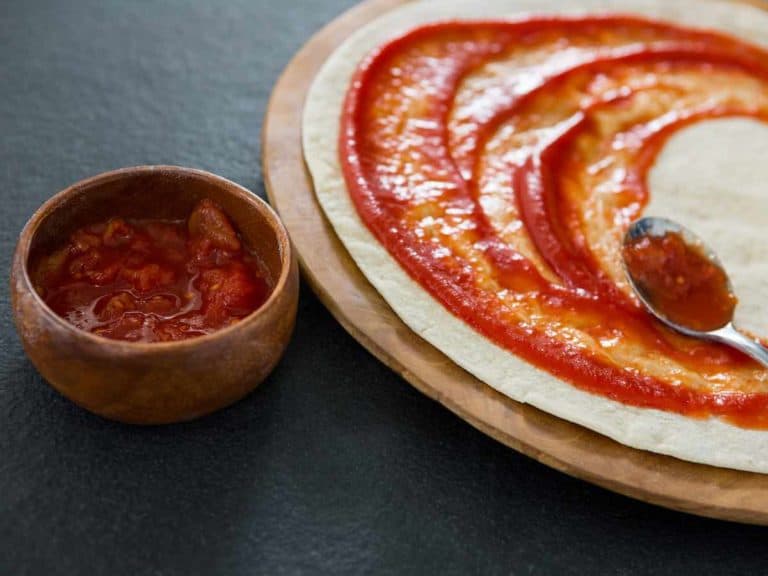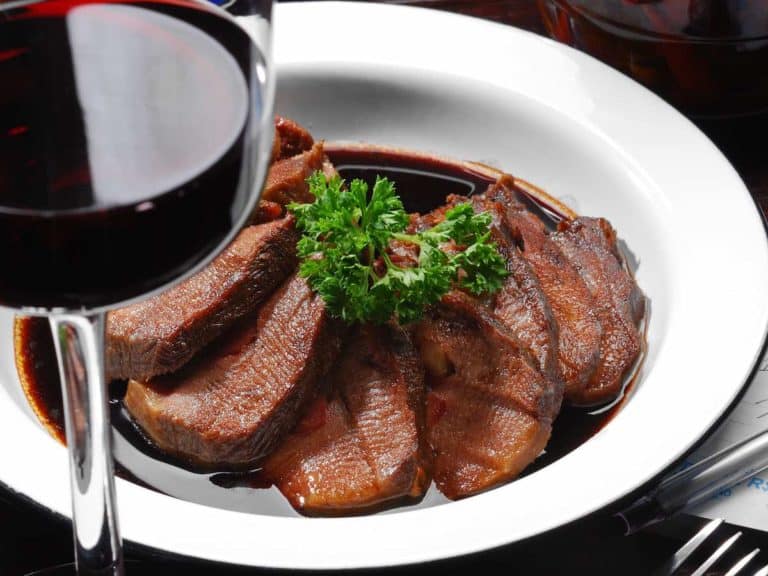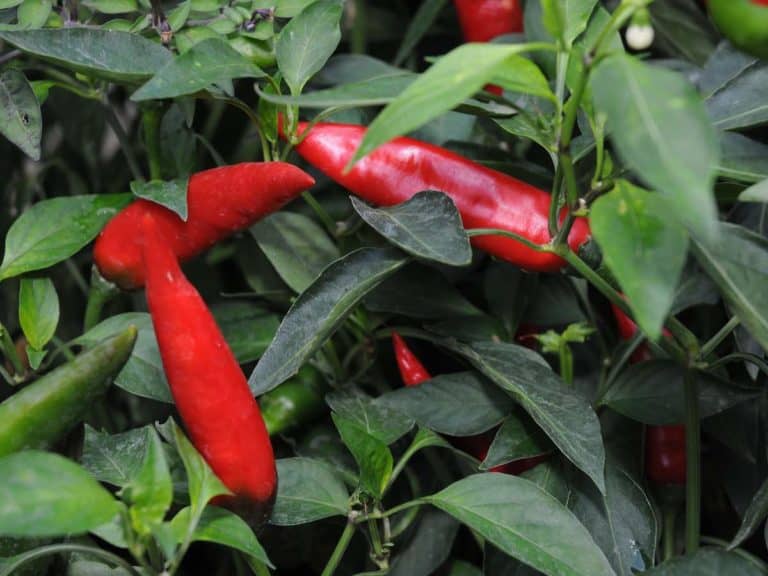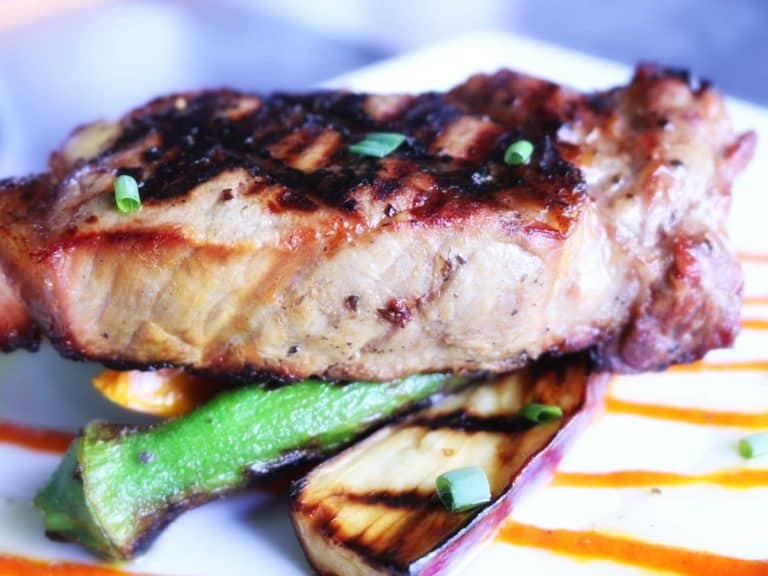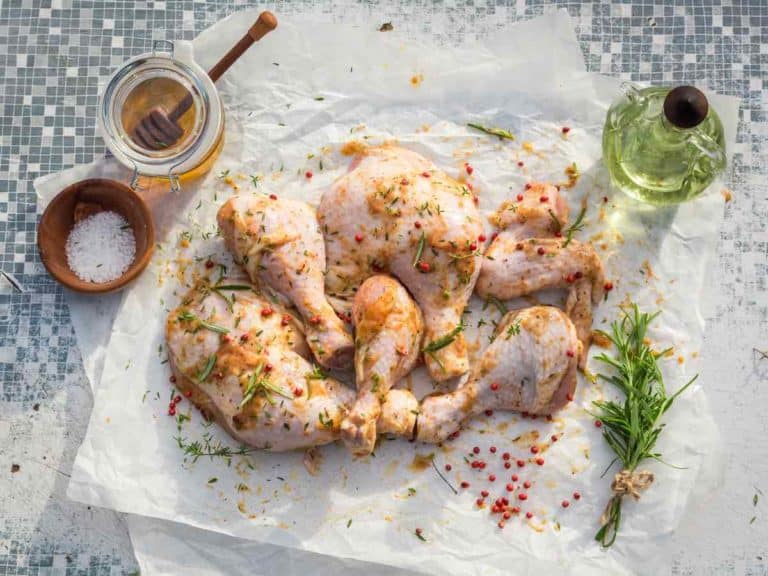Three Best Substitutes for a Cast Iron Skillet
Cast iron cookware has been around for centuries. Practically indestructible, cast iron has a lot to offer the everyday cook: even heat and excellent browning in a non-stick pan. But many cooks prefer to use cookware made of modern materials as a substitute for cast iron and its benefits.
Substitutes for a cast iron skillet include pans made from carbon steel, tri-ply stainless steel, and enamel- or nickel-coated cast iron. These alternatives result in a quality cooking experience without the heavy weight or extreme heat found in cast iron cookware.
For those cooks who want the benefits of cast iron without its downsides, check out these suggestions for alternatives to cast iron cookware.

Cast Iron Skillet Alternatives
Traditional cast iron cookware is a lot like boiled peanuts: you either love it or you hate it! Some cooks swear by a good quality cast iron skillet and rarely cook with anything else. Others think cast iron is too heavy and requires too much upkeep.
To decide what alternatives best simulate cooking with cast iron, let’s first look at the good and the not-so-good characteristics of cast iron.
| Advantages | Disadvantages |
|---|---|
| Even heat distribution | Heavier than other skillets |
| Non-stick cooking surface | Needs occasional re-seasoning to maintain |
| Great for stovetop and oven | Gets very hot – including the handle |
| Easy to clean | Not best for acidic foods |
| Cheaper than other types of skillets | Iron may leach into food |
| Lasts a lifetime | |
| Chemical-free | |
| Adds iron to the diet |
Overall, a cast iron skillet is an excellent addition to any cook’s arsenal of kitchenware. But since not everyone wants to deal with the disadvantages of cast iron, we’ll show you some great alternatives that will give you a similar result.
Carbon Steel
Without a doubt, using a carbon steel skillet is the next best thing to cooking with cast iron. Carbon steel’s composition of 99% iron and 1% carbon contrasts only slightly with cast iron’s makeup of 97-98% iron and 2-3% carbon, but it makes a difference.
According to Cook’s Illustrated, the lower amount of carbon versus iron combined with the manufacturing process results in a lighter weight pan with a smoother surface grain that won’t hold odors.
In fact, a carbon steel skillet, if well-seasoned, will exhibit better non-stick properties over time than the rougher surface of traditional cast iron.
Their curved sides make carbon steel skillets an excellent choice for sauteing foods that need a few shakes and flips for even cooking. Carbon steel goes from stovetop to oven just like cast iron.
When you shop for carbon steel cookware, you may see references to blue steel or black steel. The color variation is a result of the rust-preventative treatment applied to the steel, but there is no significant difference in performance.
Tri-Ply Stainless Steel
Tri-ply stainless steel skillets consist of two kinds of metal layered to form the pan’s surfaces and core. These metals work together so you benefit from their best material characteristics in a pan lighter than cast iron.
Typically a tri-ply skillet is composed of one layer of aluminum embedded between two layers of stainless steel. The benefits of metal include:
- Steel: Excellent heat retention; durable
- Aluminum: Excellent heat conductor and distributor; lightweight
Pairing stainless steel with aluminum helps to overcome steel’s heavier weight, longer warm-up time, and poor heat distribution. Aluminum allows the skillet to warm up more quickly while the steel lets the pan hold heat better and gives it a longer, more durable lifespan.
Some cheaper tri-ply skillets only layer the aluminum on the flat bottom of the pan. If you see the term “fully clad,” that means the aluminum layer is carried all the way up the sides of the skillet.
As long as the skillet’s handle is made from the same stainless steel materials, a tri-ply pan can go from stovetop to oven with no problem.
Check this luxurious Symphonia Prima Frying Pan on PotAndPans.
Enamel-coated or Nickel-plated Cast Iron
Some cooks might be concerned about the amount of iron that can potentially leach into food cooked in a cast iron skillet. Excessive iron in the body can be a health hazard, particularly for adult men and menopausal women.
Cast iron cookware coated in either enamel or nickel offers a safe alternative to traditional cast iron. While still providing the benefits of unclad cast iron, the thin coating on the pan’s interior prevents iron from reaching the food and maintains a (mostly) non-stick surface.
Other advantages of enamel-coated or nickel-coated skillets include:
- Works for any type of foods, even acidic ones
- Works on any type of stovetop or in the oven
- Comes in a variety of color choices
- Lasts for years
- Conducts and retains heat well
- Heats evenly
- Cleans up easily with soap and water
- Needs little maintenance
- Resists rust
If you are looking for recommendations then check my favorite Soft Grip collection from Green Life.
Cleaning Tips for Cast Iron and Cast Iron Substitutes
Routine cleaning after use is a simple and straightforward process for both cast iron and the alternatives mentioned in this article.
- Carbon steel: Wash by hand with warm water and a little soap. For stuck-on food, use a scrub brush or non-abrasive pad. Or simmer a bit of water in the skillet for 3-5 minutes then scrape clean.
- Tri-ply stainless steel: Wipe out the pan carefully while it’s still hot. Add a bit of water and soap. Using a soft brush or scrubbing pad and a circular motion, scrub off all food residue until the pan is clean. Rinse and dry thoroughly.
- Enamel-coated and nickel-coated cast iron: Hand wash using a nylon scrub brush in warm soapy water. Dry thoroughly before storing.
- Traditional cast iron: Wash by hand with warm water and a little soap. For stuck-on food, use a scrub brush or non-abrasive pad. Or simmer a bit of water in the skillet for 3-5 minutes then scrape clean. The final step is to rub or spray a bit of oil on the skillet then wipe off the excess with a paper towel.
Conclusion
If cooking with cast iron just isn’t your thing or you’ve got health concerns about all that leaching iron, it’s a great time to be a cook. Carbon steel, stainless steel, and enamel-clad cookware are all great alternatives to cast iron.
The reward? Yet another tasty recipe that can be started on the stovetop and finished to perfection in the oven – all in the same skillet.
